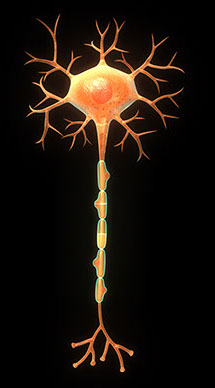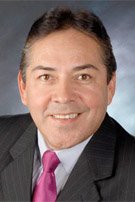


TRAFFIC SAFETY CONFERENCE
focuses on teamwork, breaks attendance record
A record number of people attended this year’s Traffic Safety Conference, organized by the Texas A&M Transportation Institute’s (TTI’s) Center for Transportation Safety (CTS). More than 300 people attended the statewide event in San Antonio, Texas, May 12–14. The event, now in its sixth year, usually attracts about 200 people.

As in previous conferences, speakers focused on issues that remain a constant in the traffic safety effort, including initiatives to change the driving culture related to distracted driving and impaired driving. However, CTS organizers also tackled new issues this year.
“We tried to expand and diversify our breakout sessions to include more aspects of traffic safety, including the efforts to improve our roadways and special problems the state is facing,” says CTS Director Robert Wunderlich. “Among other topics, the breakout sessions examined the I-35 Safety Task Force, wrong-way driving research and countermeasures, and growing energy-sector challenges. I’m very pleased and thankful for those that were willing to share their experiences and donated their time for others. We really wanted to bring in a divergent set of voices.”


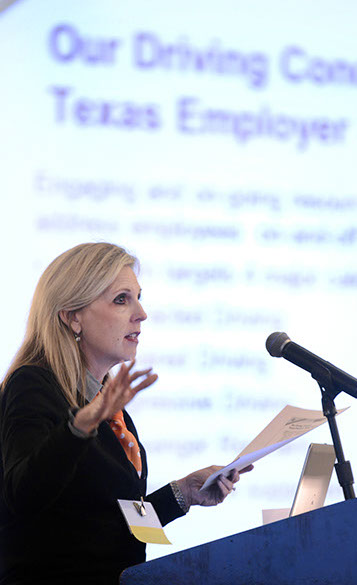

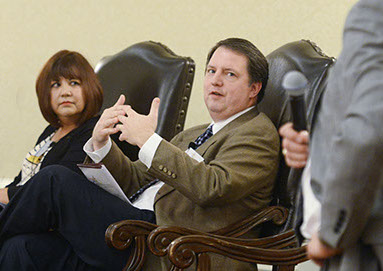
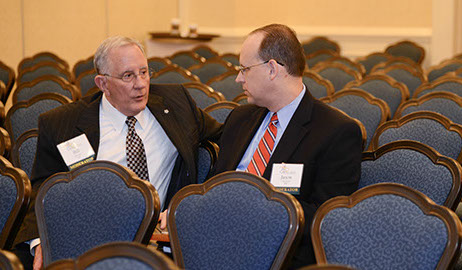
SAFETY
Collaborations
A common thread running through this year’s conference was how safety has improved through collaborations and coalitions. Many of the sessions examined how successful partnerships have been formed and how these teams came together in a common effort.


End of Queue Warning System



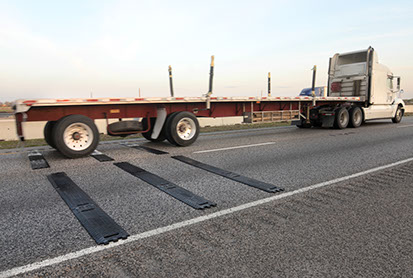
Sensors
Dynamic Message Signs
Collaborations resulted in the development of an end-of-queue warning system — a unique three-part system that includes the use of rumble strips and portable changeable message signs to warn motorists when traffic is slowing or has stopped in work zones.
Read an article describing the
end-of-queue warning system.
One such breakout session, entitled I-35 Safety Task Force, described how a series of fatal accidents in an I-35 work zone in the Waco District in 2012 led to several brainstorming sessions between the Texas Department of Transportation Waco District, the Texas Department of Public Safety (DPS), the Lane Construction Corporation and TTI. As a result of the so-called Waco District safety summit, the team came up with the idea for the end-of-queue warning system — a unique three-part system that includes the use of rumble strips and portable changeable message signs to warn motorists when traffic is slowing or has stopped in work zones. (Read an article describing the end-of-queue warning system.)
“With 178 deployments of the end-of-queue warning system in the last year, we only saw three crashes and no fatalities,” Waco District Engineer Bobby Littlefield told session attendees. “Even though it’s an expensive system, it’s money well spent.”
The breakout session speakers emphasized how working together helped them come up with a solution to the I-35 work zone crashes.
“When consecutive projects are going on, it’s not the time to individualize the responsibility,” said DPS Captain Tim Smith. “We are Texans serving Texans. The mission of our summit was simple. We owe it to our residents and all travelers to provide a safe travel environment.”
Rumble strips
ATLAS Center


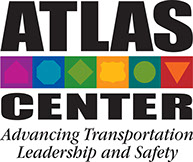
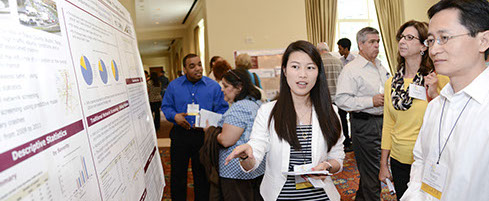
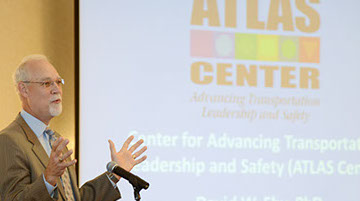
UMTRI and TTI — the nation’s two largest university-based transportation research institutes — joined forces this year to form a University Transportation Center called the Center for Advancing Transportation Leadership and Safety (ATLAS).
Read a story about ATLAS.

For the first time, traffic safety experts from the University of Michigan Transportation Research Institute (UMTRI) played a major role in the conference. UMTRI and TTI — the nation’s two largest university-based transportation research institutes — joined forces this year to form a University Transportation Center called the Center for Advancing Transportation Leadership and Safety (ATLAS).
Nearly a dozen breakout presentations examined research conducted at UMTRI. And adding to the collaboration between the two universities, nine students representing the schools took part in a poster session during the conference outlining their individual research efforts.
The Traffic Safety Conference is attended by various traffic safety professionals, including researchers, educators, medical personnel, law enforcement and roadside equipment representatives.
Human Impacts

David F. Jimenez, M.D., F.A.C.S, Professor and Chairman, Department of Neurosurgery, University of Texas Health Science Center – San Antonio gave a keynote presentation about traumatic brain injuries.
In a unique presentation, a neurosurgeon with The University of Texas Health Science Center in San Antonio detailed his work with traumatic brain injuries, a common medical problem associated with serious traffic crashes. David Jimenez told the crowd that a crash happens in Texas every 75 seconds. He described the recent advances in brain surgery techniques and in-the-field treatments.
“Dr. Jimenez was able to demonstrate the very real consequences of what happens beyond the crash scene,” Wunderlich says. “I think it was important for all of us to be reminded about the human impact of what we do, beyond the statistics. We try to save lives through our work, and Dr. Jimenez showed us a completely different dimension of that effort.”
Texas Oil Boom


Speakers focused on the destruction of roadways from increased truck traffic, the efforts to make travel safer after the sudden increase in traffic volumes, and how other states have addressed oil boom safety concerns.
One well-attended breakout session examined the challenges associated with the Texas oil boom, a growing area of concern. Speakers focused on the destruction of roadways from increased truck traffic, the efforts to make travel safer after the sudden increase in traffic volumes, and how other states have addressed oil boom safety concerns.
“I think this conference showed that we all have something to offer in improving safety. We just need to reexamine how we approach it. It’s clear that we need to work together in ways we never have before,” Wunderlich says.
